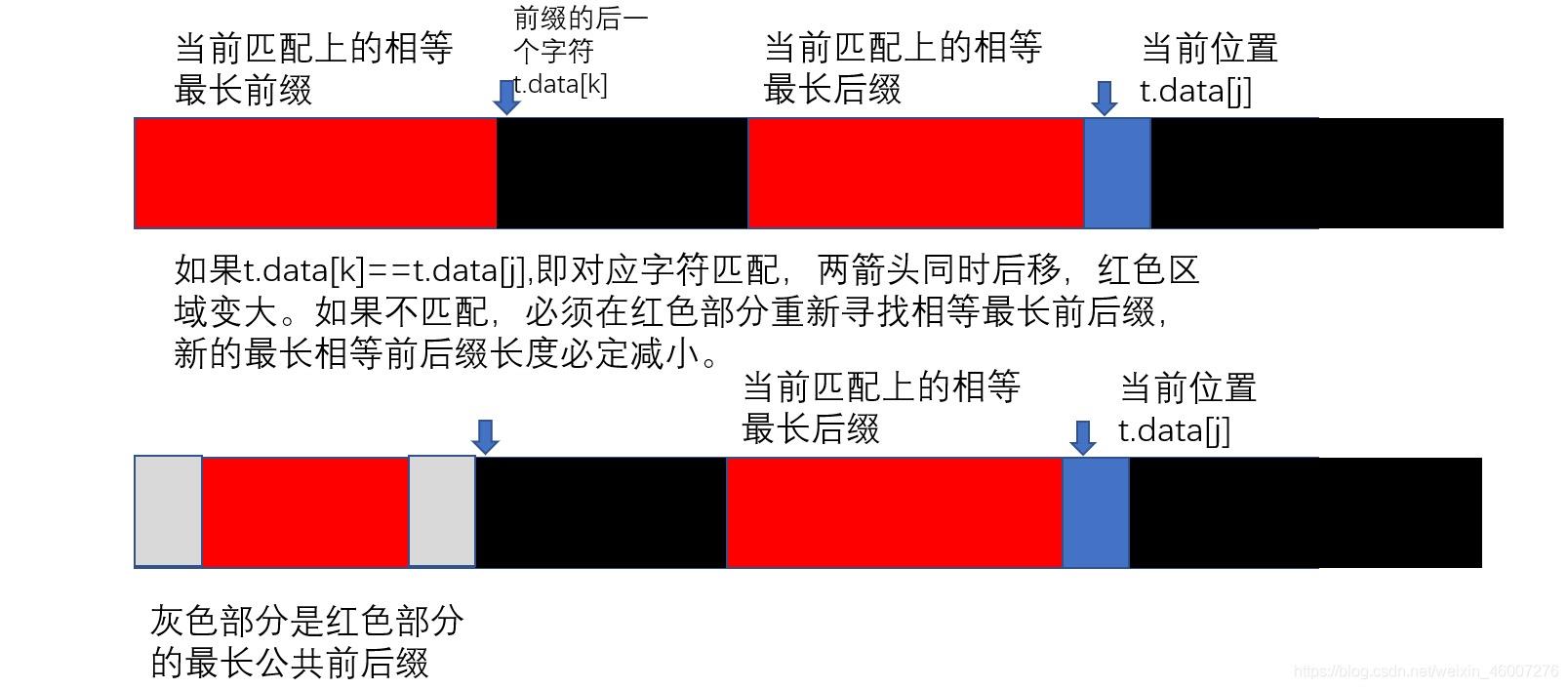理解KMP算法
Posted 程序dunk
tags:
篇首语:本文由小常识网(cha138.com)小编为大家整理,主要介绍了理解KMP算法相关的知识,希望对你有一定的参考价值。
博主的数据结构与算法笔记,不定期提交更新
总结不易,如果对你有帮助,请点赞关注支持一下
目录
KMP
KMP算法介绍
它主要的用途就是查找字符串,查找字符串"ab"(目标字符串)在字符串"abc"(待查找字符串)中出现的位置。换句话说,就是查找字符串"abc"是否包含字符串"ab",如果包含,返回包含的起始位置
算法由两部分组成
1、计算subStr每一位及之前的字符串中,前缀和后缀公共部分的最大长度的next数组
2、匹配destStr和subStr,当subStr失配时,利用next数组,实现subStr的最大后移,从而避免不必要的匹配,减少匹配次数
BF(Brute Force)

class Solution {
public int strStr(String haystack, String needle) {
int len1 = haystack.length();
int len2 = needle.length();
if(len2 == 0) return 0;
int l = 0;
int r = 0;
while(l < len1 && r < len2) {
if(haystack.charAt(l) == needle.charAt(r)) {
l++;
r++;
} else {
l = l - r + 1;
r = 0;
}
}
if(r == len2) {
return l - r;
}
return -1;
}
}
KMP算法


计算next数组
private static int[] getNext(String target) {
//创建一个数组
int[] next = new int[target.length()];
//定义两个变量
int len = -1;//指向当前公共前缀的前端的末尾
int y = 0;//指向当前公共前缀的后端的末尾
//赋初值
next[0] = -1;
while(y < target.length() - 1) {
if (len == -1 || target.charAt(len) == target.charAt(y)) {
len++;
y++;
next[y] = len;
} else {
len = next[len];
}
}
return next;
}
为什么要进行next回溯


28. 实现 strStr()
实现 strStr() 函数。
给你两个字符串 haystack 和 needle ,请你在 haystack 字符串中找出 needle 字符串出现的第一个位置(下标从 0 开始)。如果不存在,则返回 -1 。
说明:
当 needle 是空字符串时,我们应当返回什么值呢?这是一个在面试中很好的问题。
对于本题而言,当 needle 是空字符串时我们应当返回 0 。这与 C 语言的 strstr() 以及 Java 的 indexOf() 定义相符。
示例 1:
输入:haystack = "hello", needle = "ll"
输出:2
示例 2:
输入:haystack = "aaaaa", needle = "bba"
输出:-1
class Solution {
public int strStr(String haystack, String needle) {
if(needle.length() == 0) return 0;
return kmpSearch(haystack, needle);
}
public int kmpSearch(String haystack, String needle) {
int[] next = getNext(needle);
int x = 0;
int y = 0;
while(x < haystack.length() && y < needle.length()) {
if(y == -1 || haystack.charAt(x) == needle.charAt(y)) {
x++;
y++;
} else {
y = next[y];
}
}
if(y == needle.length()) {
return x - y;
}
return -1;
}
public int[] getNext(String needle) {
int[] next = new int[needle.length()];
int len = -1;
int y = 0;
next[0] = -1;
while(y < needle.length() - 1) {
if(len == -1 || needle.charAt(len) == needle.charAt(y)) {
len++;
y++;
next[y] = len;
} else {
len = next[len];
}
}
return next;
}
}
以上是关于理解KMP算法的主要内容,如果未能解决你的问题,请参考以下文章